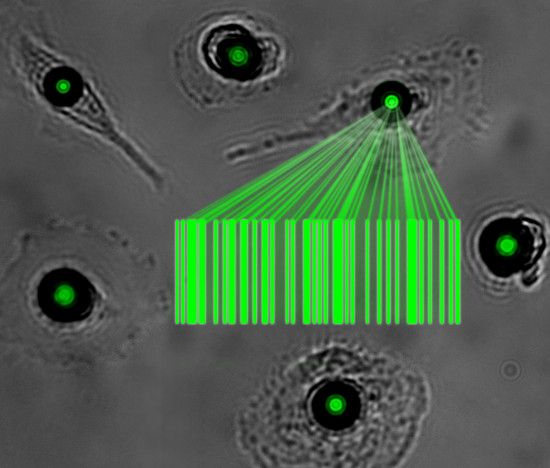 The field of medicine sees advances in miniaturization on a regular basis, but now we’re almost shocked by the fact that researchers at the University of St Andrews in the UK managed to introduce microscopic lasers into the interior of live cells. While at first it might seem as practical as attaching lasers to sharks’ heads, the technology actually has great potential in biomedical applications for tracking individual cell movements within a living body.
The field of medicine sees advances in miniaturization on a regular basis, but now we’re almost shocked by the fact that researchers at the University of St Andrews in the UK managed to introduce microscopic lasers into the interior of live cells. While at first it might seem as practical as attaching lasers to sharks’ heads, the technology actually has great potential in biomedical applications for tracking individual cell movements within a living body.
Optical resonators that generate a coherent beam of light have previously been too large to fit inside a cell, but the researchers behind the latest research published in Nano Letters managed to scale the core of a laser that it can fit inside of white blood cells. The so-called fluorescent whispering gallery mode (WGM) microresonators were introduced inside of cells by fooling the natural endocytosis process which lets certain molecules pass through cells walls. The target cells were then illuminated by external pulses of light, activating the microresonators that immediately responded by beaming back green laser light.
Because this laser light has optical characteristics that are unique to the cell that the microresonator finds itself in, all the cells tagged this way can be tracked individually for days at a time as they migrate throughout the body. While the initial study focused on white blood cells, the researchers believe the technology can be translated to other applications, including tracking how elusive circulating tumor cells move from the primary tumor to invade other healthy targets.
Study in Nano Letters: Letter Previous Article Next Article Articles ASAP Lasing within Live Cells Containing Intracellular Optical Microresonators for Barcode-Type Cell Tagging and Tracking…
Source: University of St Andrews…
The post Lasers Embedded Inside Cells to Help Track Spread of Cancer appeared first on Medgadget.
